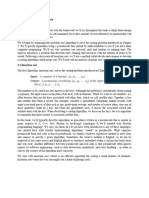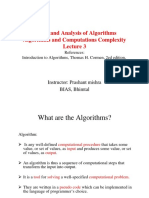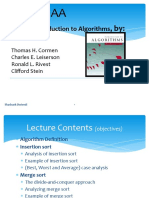0% found this document useful (0 votes)
55 views24 pagesLectures 1-2 - Introduction - InsertionSort - MergeSort
Uploaded by
minhtuelt10a4Copyright
© © All Rights Reserved
We take content rights seriously. If you suspect this is your content, claim it here.
Available Formats
Download as PDF, TXT or read online on Scribd
0% found this document useful (0 votes)
55 views24 pagesLectures 1-2 - Introduction - InsertionSort - MergeSort
Uploaded by
minhtuelt10a4Copyright
© © All Rights Reserved
We take content rights seriously. If you suspect this is your content, claim it here.
Available Formats
Download as PDF, TXT or read online on Scribd
/ 24

























































